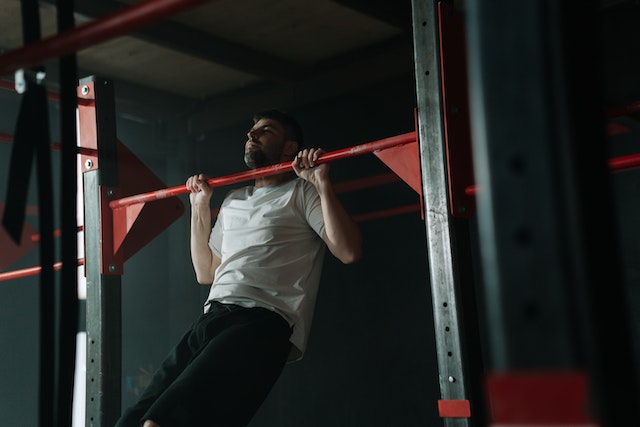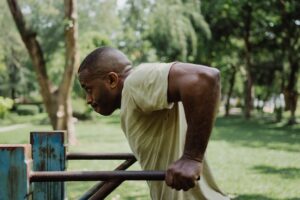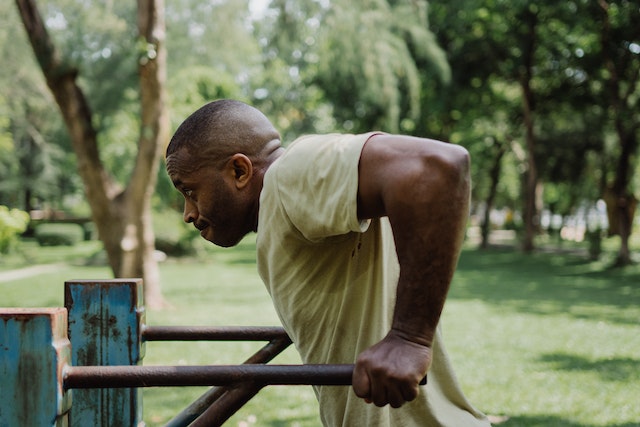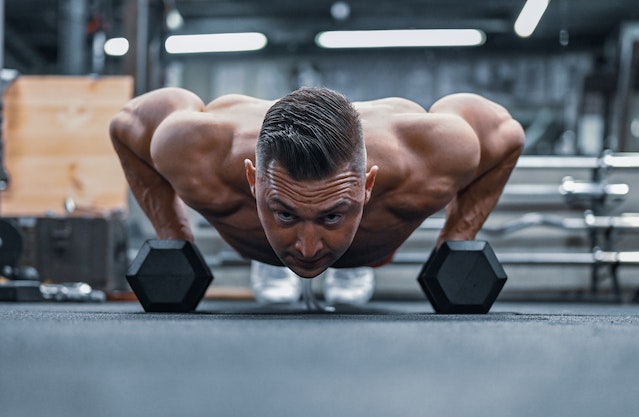Are you looking to take your calisthenics training to the next level? As seasoned fitness enthusiasts know, pull-ups and chin-ups are two fundamental exercises that sculpt a powerful upper body. But have you ever wondered why pull-ups seem to present a more formidable challenge compared to chin-ups? If you find yourself struggling with pull-ups, fear not! In this article, we unravel the mystery behind the difficulty of pull-ups and explore ten compelling reasons why they can be tougher than their close cousin, the chin-up. So, buckle up and get ready to dive into the world of calisthenics as we shed light on the intricacies of these two powerhouse exercises!
Explaining Pull-Ups and Chin-Ups
Pull-ups and chin-ups are bodyweight exercises that fall under the category of calisthenics. In a pull-up, you grip the overhead bar with your palms facing away from you (overhand grip), while in a chin-up, your palms face towards you (underhand grip). The primary objective of both exercises is to pull your body upward until your chin clears the bar, engaging the muscles in your upper body and core.
Highlighting Their Similarities: Targeting Upper Body and Core Muscles
Both pull-ups and chin-ups are exceptional compound movements that work various muscle groups simultaneously. The major muscle groups involved include the latissimus dorsi (lats), biceps, rhomboids, and trapezius, which contribute to the pulling motion. Additionally, these exercises demand substantial core engagement to maintain stability throughout the movement.
Setting the Context: Understanding the Challenge of Pull-Ups
While both pull-ups and chin-ups have their merits in building upper body strength and improving functional fitness, pull-ups often pose a greater challenge for many enthusiasts. In this article, we delve into the reasons behind why pull-ups are commonly perceived as more difficult than chin-ups in the realm of calisthenics. By the end of this journey, you’ll gain valuable insights into the unique demands that pull-ups place on various muscle groups and why conquering this exercise can be an exhilarating achievement in your fitness journey. So, let’s get started and uncover the secrets behind the mystique of pull-ups!
Reason 1: Grip Positioning
In pull-ups, the grip used is the overhand grip, where your palms face away from you. This grip places the majority of the work on the back muscles, particularly the lats. The overhand grip also engages the forearms, making it an excellent exercise for overall upper body development.
The Grip Used in Chin-Ups: Underhand Grip and Its Advantages
Chin-ups, on the other hand, employ the underhand grip, with palms facing towards you. This grip places more emphasis on the biceps, making it a great exercise for targeting arm strength. The underhand grip can also be more comfortable for some individuals, as it feels more natural and allows for a stronger contraction of the biceps.
Contrasting the Two Grips: Strain on the Upper Back and Forearms
The overhand grip used in pull-ups demands greater activation of the upper back, particularly the lats. While this is beneficial for overall upper body strength, it can also lead to more fatigue in the upper back and forearms. The underhand grip in chin-ups, with its emphasis on the biceps, can sometimes provide a bit of relief for the upper back and forearms. This difference in grip positioning contributes to the perception that pull-ups are harder than chin-ups.
Reason 2: Lat Activation
The lats, or latissimus dorsi muscles, play a crucial role in both pull-ups and chin-ups. These large muscles in your back are responsible for the pulling motion during the exercises. When activated, the lats work to bring your body closer to the bar and provide the necessary power for the upward movement.
Elaborating on the Challenges in Pull-Ups: Less Engagement Due to Overhand Grip
Despite the importance of the lats in pull-ups, the overhand grip used can sometimes make it harder to engage them fully. This reduced lat activation can result from a weaker mind-muscle connection or the grip placing more demand on the forearms. Consequently, initiating the pull-up motion may require more effort, making pull-ups feel more difficult compared to chin-ups.
Reason 3: Bicep Involvement
In chin-ups, the underhand grip places the biceps in a mechanically advantageous position, leading to increased bicep activation. As you pull yourself up, the biceps are in a more favorable position to contribute significantly to the movement, aiding in lifting the body towards the bar.
Contrasting with Pull-Ups: Less Reliance on Biceps, More Demand on Other Muscles
Pull-ups, with their overhand grip, rely less on the biceps and put more emphasis on other muscle groups like the lats and upper back. While this diversifies the workout and helps build overall upper body strength, it can also make pull-ups feel more challenging, especially for individuals accustomed to relying on their biceps for strength during chin-ups.
Reason 4: Core Stabilization
Core engagement is a fundamental aspect of both pull-ups and chin-ups. The core muscles act as a stabilizing force, ensuring proper form and alignment throughout the movements. A strong and activated core prevents excessive swinging or arching of the back, enabling a controlled and efficient execution of the exercises.
Explaining the Differences: How Core Stability Becomes More Challenging in Pull-Ups Due to the Overhand Grip
While both exercises require core engagement, pull-ups present a unique challenge due to the overhand grip. The overhand grip places the body in a slightly more extended position, requiring the core muscles to work harder to maintain a straight line from head to heels. This increased demand on core stability can make pull-ups feel more demanding compared to chin-ups.
Pulling the body upwards with an overhand grip can create a tendency to lean back, leading to a greater reliance on the lower back muscles. To maintain proper form and avoid this compensation, the core must actively counterbalance the pulling motion, placing more emphasis on the abdominal and oblique muscles during pull-ups.
Improving core strength and control through exercises such as planks, hanging leg raises, and hollow holds can greatly enhance core stability during pull-ups. By focusing on maintaining a strong and stable core throughout the movement, individuals can perform pull-ups more efficiently and with reduced strain on the lower back.
Reason 5: Shoulder Mobility
Shoulder positioning plays a pivotal role in the execution of both pull-ups and chin-ups. Proper alignment of the shoulders ensures optimal muscle activation and reduces the risk of shoulder injuries during these exercises.
Pointing Out the Increased Demands on Shoulder Mobility in Pull-Ups
Pull-ups require greater shoulder mobility compared to chin-ups, primarily due to the overhand grip and the wider grip width used. The overhand grip places the shoulders in a slightly externally rotated position, challenging the mobility and flexibility of the shoulder joint.
During the pulling motion of pull-ups, the shoulders must go through a broader range of motion, from full extension at the bottom to elevation at the top. This increased range of motion demands sufficient flexibility in the shoulders to perform the exercise safely and effectively.
Offering Tips on Improving Shoulder Mobility for Better Pull-Up Performance
To enhance shoulder mobility for pull-ups, individuals can incorporate shoulder-specific warm-up exercises into their routine. Exercises like shoulder dislocations with a resistance band, arm circles, and shoulder stretches can help increase the range of motion and flexibility in the shoulder joint.
Additionally, practicing active hangs from the bar can gradually improve shoulder mobility and grip strength simultaneously. These hangs allow the shoulders to adapt to the demands of pull-ups gradually, reducing the risk of overexertion or injury.
It is essential to progress gradually and avoid pushing the shoulders beyond their current limits. Consistency and patience in developing shoulder mobility will yield long-term benefits, allowing for safer and more effective pull-up performance. By nurturing shoulder health and mobility, individuals can unlock their full potential in conquering the challenging realm of pull-ups.
Reason 6: Scapular Retraction
Scapular retraction involves squeezing the shoulder blades together, which plays a crucial role in maintaining proper form during calisthenics exercises like pull-ups and chin-ups. Proper scapular retraction helps stabilize the shoulders, enhances overall pulling strength, and reduces the risk of shoulder injuries. It also ensures that the right muscles are engaged throughout the movement, maximizing the benefits of the exercise.
Elaborating on the Difficulties in Achieving Scapular Retraction During Pull-Ups
While scapular retraction is crucial for both pull-ups and chin-ups, it can be more challenging to achieve during pull-ups due to the overhand grip. The positioning of the hands in the overhand grip makes it harder to initiate and maintain scapular retraction, as the focus shifts more to the back muscles. This difficulty can lead to improper form and decreased pulling power, making pull-ups feel more demanding than chin-ups.
Offering Techniques to Work on Scapular Retraction for Improved Pull-Up Ability
To improve scapular retraction during pull-ups, one can practice scapular activation exercises separately. Engaging in exercises like scapular pull-ups, scapular rows, and scapular push-ups can help build the mind-muscle connection necessary to properly activate the shoulder blades during pull-ups. Incorporating these exercises into your routine can enhance scapular retraction and lead to improved pull-up performance.
Reason 7: Pronation vs. Supination
The terms pronation and supination refer to the rotation of the forearm. In pull-ups, the hands are in a pronated position, with the palms facing away from the body. Conversely, in chin-ups, the hands are in a supinated position, with the palms facing towards the body. This difference in hand positioning alters the emphasis on various muscles during the exercises.
Explaining the Biomechanical Challenges Presented by Pronation in Pull-Ups
The pronated grip used in pull-ups creates a less mechanically advantageous position for the arms and shoulders. This grip can result in less efficient leverage and force distribution, which might make pull-ups feel more difficult compared to chin-ups. Additionally, the pronated grip places greater demand on the wrist and forearm muscles, contributing to the perception of increased difficulty in pull-ups.
Reason 8: Muscle Imbalances
Chin-ups, with their emphasis on bicep activation, can lead to muscle imbalances in the upper body if performed excessively without proper balance. Overemphasizing chin-ups might lead to relatively stronger biceps compared to other muscles involved in pulling motions, such as the lats and upper back.
Explaining How These Imbalances Can Make Transitioning to Pull-Ups Harder
When transitioning from chin-ups to pull-ups, the muscle imbalances created by the overemphasis on bicep strength can hinder proper engagement of the other muscle groups required for pull-ups. As a result, the body may struggle to adapt to the different demands of the exercise, making pull-ups more challenging for those accustomed to predominantly performing chin-ups.
Reason 9: Grip Strength
Grip strength is a fundamental component of calisthenics, especially in exercises like pull-ups and chin-ups. A strong grip allows you to maintain a firm hold on the bar, enabling you to perform the movements with control and stability.
Discussing How the Overhand Grip in Pull-Ups Demands More Grip Strength
The overhand grip used in pull-ups places more strain on the forearm muscles and demands greater grip strength compared to the underhand grip in chin-ups. The need to maintain a secure hold during the entire movement can make pull-ups more challenging, particularly for individuals with relatively weaker grip strength.
Final Thoughts
Pull-ups and chin-ups stand as pillars of calisthenics, shaping a robust upper body and fostering functional strength. Throughout this exploration, we’ve unearthed ten compelling reasons why pull-ups are often considered more arduous than chin-ups.
From the contrasting grip positions that engage different muscle groups to the demands on core stability and shoulder mobility, each factor plays a pivotal role in the unique challenge of pull-ups. The mental aspect also looms large, requiring determination and focus to overcome the perceived obstacles.
Yet, as with any pursuit in fitness, embracing the struggle holds the key to triumph. By understanding the intricacies of pull-ups and applying targeted training techniques, individuals can bridge the gap and conquer the pull-up bar. With persistence and patience, progress will be made, and strength will soar.
In the realm of calisthenics, pull-ups serve as a potent reminder that greatness lies beyond our comfort zones. So, let us stand before the bar, ready to embrace the challenge, and embark on a journey of self-improvement—one pull-up at a time. Together, let us push the boundaries of our abilities and soar to new heights, celebrating each achievement and paving the way for personal growth and accomplishment.





